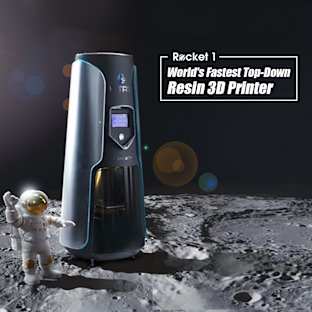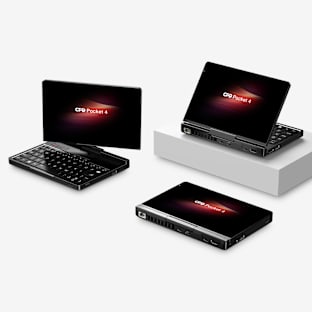The Idea.
We all have loved ones who are action sport junkies. They ride motorcycles, race bicycles, or rip down the slopes - heck, that's us! And, despite our mom's very specific instructions, we don't always go in pairs. Every so often, we take a spill that leaves us thinking "What if I was alone, and was injured more seriously?" Then we brush ourselves off and go right back at it.
Luckily, Biju Thomas opted to write down his idea and engage his friend, Dr. Tim Bauer (always nice to have a PhD buddy when you have a big idea). The two developed what has become the first personal crash sensor. Not just any crash either. This isn't for dropping your helmet or brushing a limb on the mountain - this is for serious head impacts.
![The sensor mounts onto any helmet as an aftermarket device.]() The sensor mounts onto any helmet as an aftermarket device.
The sensor mounts onto any helmet as an aftermarket device.
How It Works.
By pairing impact detection technology with the existing ICEdot service, we've been able to create a complete system that detects your most severe crashes, triggers your smart phone to notify your emergency contacts, and displays your emergency medical information. This helps first responders provide fast, accurate treatment. We also let you save and share the data of your crash – creating the world's first lie detector for your wipe outs.
The Crash Sensor pairs with your phone and is managed by the ICEdot Crash Sensor app. If the sensors detect an impact severe enough to exceed safe levels, your phone sounds an alarm and begins an emergency countdown.
![If you don't disable the countdown, the app displays your emergency profile and notifies your emergency contacts.]() If you don't disable the countdown, the app displays your emergency profile and notifies your emergency contacts.
If you don't disable the countdown, the app displays your emergency profile and notifies your emergency contacts.
You can disable the countdown (you can set the count down to a user defined length) if you don’t need assistance. However, if the countdown is not disabled (you may be injured or unconscious), then the app triggers an emergency notification, notifying your emergency contacts, (via text, email, or both) and providing them your GPS location.
By providing your GPS location and emergency profile, first responders have immediate access to your important medical information when you need it most.
What We Need.
We’ve gone through several prototypes to reduce size and power limitations, and now have it near production form. A few months ago, we made the decision to switch to low-energy Bluetooth (BLE), and now have a working prototype using BLE.
We need you to help us take the Crash Sensor from working prototype to final production unit, help us cover production tooling, and expand the app out across multiple mobile platforms.
We need your help. Please review the funding levels, find one that suits you, and commit. You just might save a life.
In The Press
The ICEdot Crash Sensor prototype announcement has already generated significant media attention. Check it out:
VeloNews
"...a life-defining difference the next time you hit your head in a crash."
ESPN
"ICEdot crash sensor saves lives."
Engadget
"ICEdot and SenseTech hope to take the traditional brain bucket to new heights."
Bike Radar
"ICEdot has a solution... (that) can provide an actual level of protection."
Gizmodo
"This could be the perfect accessory if no one comes to your rescue after a crash."
Mashable
"The innovative wireless sensor... can detect motion, changes in forces and impacts that occur when the rider has fallen."
Daily Mail
"'Life saver' bike helmet connects with your phone and alerts emergency services if you are in an accident."
Gear Junkie
"Helmet Sensor 'Calls Your Loved Ones' in a Bike Crash"
Gizmag
"Not just for cyclists, the ICEdot Crash Sensor is aimed at snowboarders, skiers, mountain-bikers, or really anyone participating in risky activities."
The Rewards.
$5 or more
Periodic project updates and a giant Thank You!
$25 or more
ICEdot Band (silicone wristband) and 1-Year ICEdot membership
$50 or more
THE ICE PACK: ICEdot Band + 1 year membership + T-Shirt + Snap + Sticker Pack
$60 or more
A MYSTERY ITEM + ICE PACK (ICEdot Band + 1 year membership + T-Shirt + Snap + Stickers)
$75 or more
THE FEED ZONE + ICE PACK (ICEdot Band + 1 year membership + T-Shirt + Snap + Stickers)
$150 or more
Crash Sensor earlybird special + your name in the Credits section of the mobile app
$200 or more
Crash Sensor + your name in the Credits section of the app
$350 or more
ICEdot Cycling Jersey + ICE PACK + Crash Sensor
![ICEdot Cycling Jersey + ICE PACK + Crash Sensor]()
Boulder, Colorado ride with pro cyclist Lucas Euser + Meal from world-class chef Biju Thomas + ICE PACK + Crash Sensor
$10,000 or more (Call the office line, ask for Casey)
You definitely have our attention. And probably a T-shirt or two.
Frequently Asked Questions.
What if I don't have cell service?
The system is designed to use cell service when it calls for help. The sensor will still send the data about your impact to the phone and the phone will make repeated attempts to send out alerts but if no signal is available, no alerts will go out.
What if I don't ride/ski alone?
Do you know the medical conditions of the people you ride/ski with? How to contact their loved ones if they were in an accident? Would they know yours? The Crash Sensor will ensure that your loved ones are contacted immediately, and your emergency medical information is known by first responders when it counts.
How sensitive is it? Is this thing going to be going off all the time when I drop my helmet in the garage?
The sensor is not so sensitive a dropped helmet is going to cause it to go off. In fact, the only drops that are going to trigger it are ones you should consider replacing your helmet for.
If I'm in an accident, won't my phone break too?
We've been in accidents and had friends in accidents where the phone is how EMS notified family, calling the last dialed number. Phones are generally carried on the body and often in places that don't take a direct impact.
How many crashes is it "good for"? Will I have to buy a new one after each crash?
There is no limit to the number of times the sensor can be used. It detects forces your head experiences, it does not require a direct impact to the sensor itself.
If my phone is in my backpack or elsewhere and the device accidentally goes off, how will I know? Does the phone or device make a sound?
The phone sounds an alarm and vibrates.
Will the device drain my battery?
The app runs on your phone but is not in a constant broadcast or streaming mode, it's essentially waiting for a message from the sensor. We've had success running the app for more than 8 hours in our testing without noticeably effecting battery life beyond normal phone usage.
How is the device powered?
The final product will use a USB rechargeable, Lithium-Ion battery. Our current prototypes use a replaceable battery.
How long does the battery last before it needs to be recharged? Does it 'warn' you when it is getting low on power?
The app wil be able to let you know the power level of the sensor and can warn you when it is low. The device uses low energy bluetooth (BLE) which was designed for applications such as these, reducing battery drain by over 1/3. According to Texas Instruments, maker of BLE, a device can last over a year on a single coin sized battery.
Does this work internationally?
Yes.
Can the sensor be moved between helmets? How does it attach?
Yes. The final attaching mechanism is not finalized but will facilitate helmet transfer without being overly easy to remove.
Will the sensor be limited to iPhone?
No, our prototypes are working with iPhone but we will release an Android version when the product is shipped.






























































 The sensor mounts onto any helmet as an aftermarket device.
The sensor mounts onto any helmet as an aftermarket device.
 If you don't disable the countdown, the app displays your emergency profile and notifies your emergency contacts.
If you don't disable the countdown, the app displays your emergency profile and notifies your emergency contacts.


























